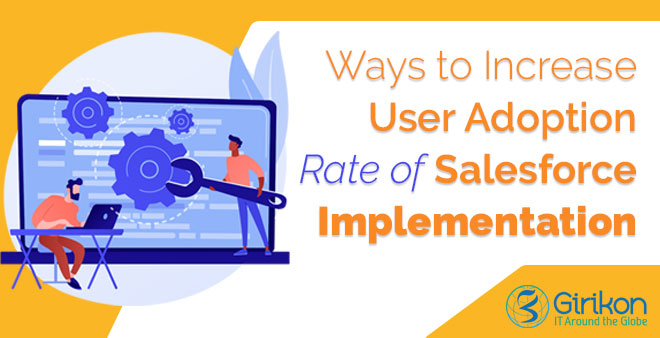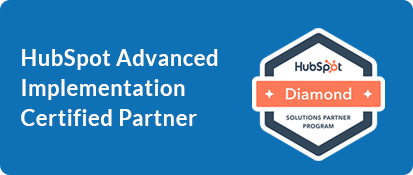Our Blogs
Salesforce is known to be one of the most popular CRM platforms available. This robust platform offers various cloud solutions that organizations can leverage to resolve their specific business issues. However, even after implementing Salesforce, many users fail to get the desired outcome, which may primarily happen due to improper implementation strategy. An inaccurate implementation strategy or planning can reduce the chances of user adoption.
A strategic implementation can lead to guaranteed success. For ensuring successful Salesforce implementation, it’s essential to follow the below mentioned best practices:

Choose the Best Implementation Strategy: The kind of implementation strategy a business adopts will depend on the type of business process. If a company isn’t satisfied with the performance of its sales, marketing, and customer services, they have two options at their disposal:
- By implementing and migrating their processes to Salesforce in the best possible way.
- By redefining their design and processes from scratch within Salesforce
Select Appropriate Implementation Stages:
Once you are ready with your future implementation, it’s essential to evaluate the possible ways of current Salesforce implementation. Mentioned below are two methods for that:
- Multiple Salesforce Cloud Implementations: All the departments, including sales, service, and marketing, can be automated by implementing Salesforce. With this, organizations can enjoy streamlined business processes and other automation capabilities such as email notification, field updates, and sales service contributions. By leveraging the three important Salesforce clouds i.e., sales, service, and marketing cloud, the functioning of all the three departments can be augmented. With this, organizations can enjoy better customer engagement and retention. However, data integrity, data loss, corruption, and chances of failure increase with multiple implementations. To ensure a seamless implementation journey, it is essential to partner with a certified Salesforce professional.
- Salesforce Cloud Integration: Gradual implementation of Salesforce clouds should be done to lower the integration risk. You can begin with implementing your priority cloud, i.e., sales or marketing, followed by the execution of service cloud implementation. However, to maintain internal departmental synchronization, you may have to perform provisional implementation parallel.
Planning of Implementation steps:
The sequence of Salesforce implementation generally includes the following steps:
- Consulting: A Salesforce consultant you engage can help you select essential functionalities by analyzing the business process needs. A consultation may also suggest a better implementation approach for your business process and the best licensing option for your business.
- Data Transfer to a New System: While importing data to the CRM, safety of data import steps should be ensured to ensure data quality. Other aspects such as data duplication, data cleansing, mapping of data objects etc. can be performed through migration tools.
- Application Configuration: Since the implementation is incomplete without customization, Salesforce objects need to be customized through point and click tools to provide step-by-step functionality enhancements. Post customization, the implementation should be tested by testing engineers. The process is migrated to the UAT (user acceptance testing) for deployment.
- Budget Planning: An important thing to consider while implementing Salesforce is the time taken to implement all the essential features. If the implementation scope is clearly defined, then the organization can easily do time and budget planning.
Implementation Risk: Risk forecasting is crucial as it impacts implementation results. Some of the risks include the following:
- Inculcation of any irrelevant feature: You may want to purchase an expensive Salesforce edition with rich functionalities. However, you might not be requiring all the features and thus may end up paying more. Consequently, you may get a compliant solution with extra features without paying more.
- Using Non-User-Friendly Solution: The adoption rate might drop if your users aren’t comfortable with the chosen functionality, resulting in lower productivity.
Final Thoughts:
Without complete user adoption, Salesforce implementation might be incomplete. Right from the beginning i.e., from the first step to the final stage, organizations need to consider all the aspects of user adoption. Besides this, organizations need to choose a proper and suitable implementation strategy, plan their budget and timeline. This will ultimately result in increased business ROI and a greater adoption rate. For any assistance regarding Salesforce implementation, it is essential to partner with one of the reputed Salesforce consulting companies.

 +1-480-382-1320
+1-480-382-1320 +61-1300-332-888
+61-1300-332-888 +91 9811400594
+91 9811400594






